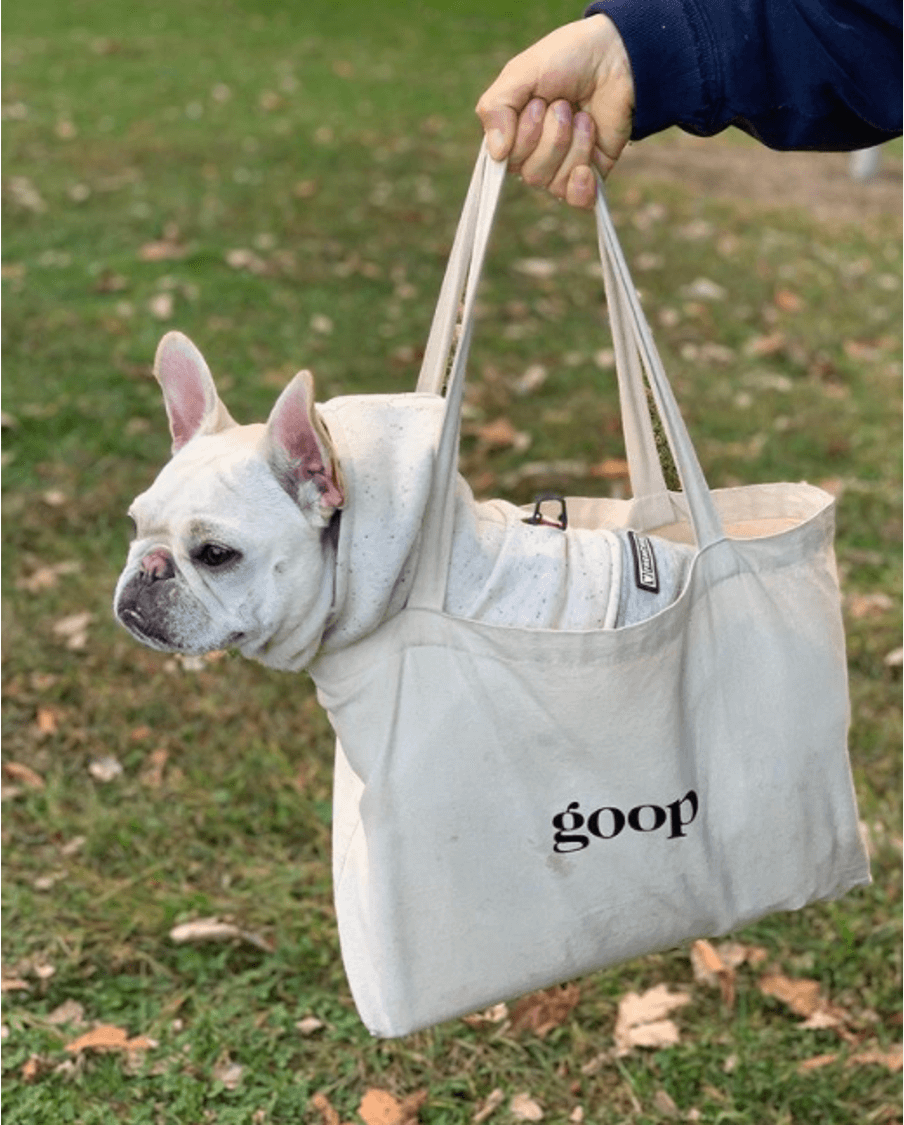Our Thoughts
Brand Menageries How brands are embracing their wild side
Over lockdown we have seen an animal uprising across brands’ social media feeds, ad campaigns, and product design. Katharine Hill sniffs out some of the cultural meanings of this cuddly menagerie.
2.1m people in UK acquired a pet during lockdown (according to PMFA); proving the role of animals as a soothing distraction has never been more important. And it’s not just in the acquisition of new fluffy friends – we have observed animals popping up as an intriguing visual motif across many parts of culture.
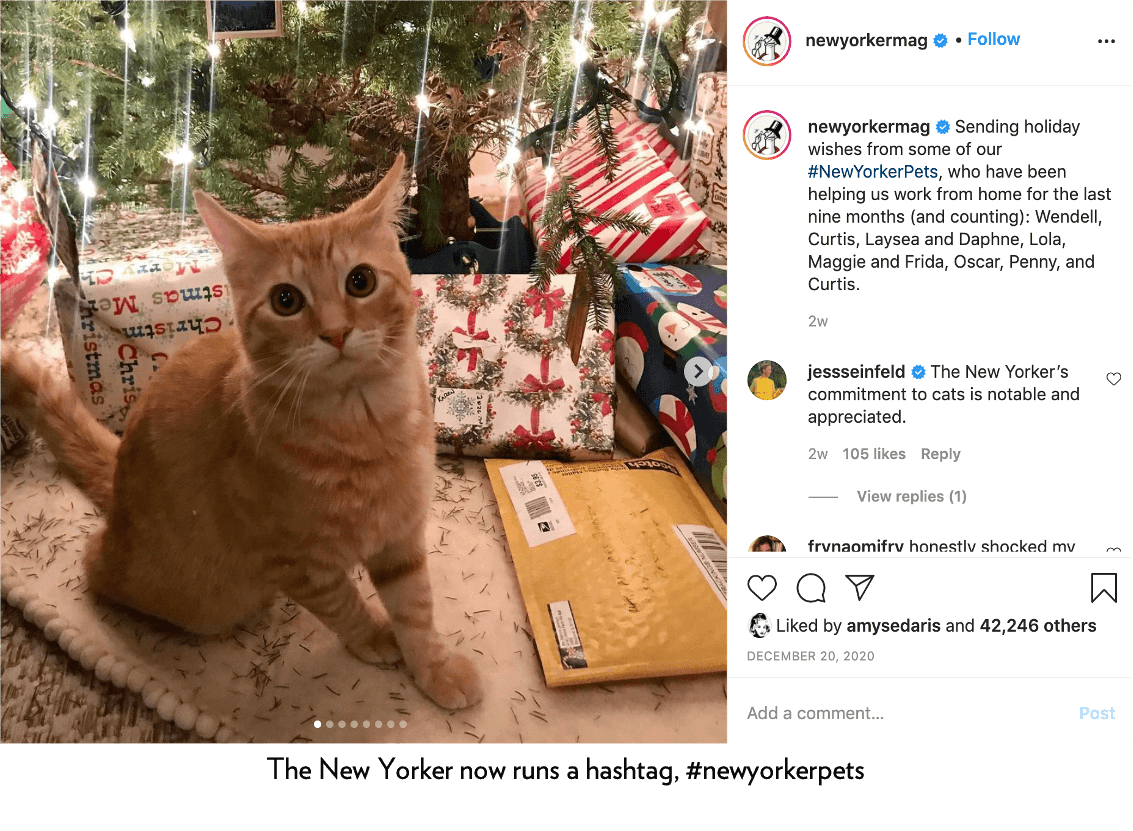 Across a number of beauty brands’ social media feeds we witness a plethora of fluffy animals (puppies, kittens, baby farm animals) in anthropomorphised, relaxed-looking poses (e.g. spa treatments, receiving massages, getting a faux blow-out). These cute animal-based shots signal a simple calm – sigh, a Shiba Inu getting a face mask! – and help create soothing narratives of ease and simplicity, a sanctuary from the harsh complexity of the human world. There is something effortlessly funny about an animal video – not cynical, not satirical, but straightforwardly charming. Brands such as Glossier and Goop have been savvy in making use of animal antics as a signifier of gentle goodwill and humour. Animals keep jokes on the right side of intensity; a welcome and uncomplicated brain cleanser in times of complicated stress.
Across a number of beauty brands’ social media feeds we witness a plethora of fluffy animals (puppies, kittens, baby farm animals) in anthropomorphised, relaxed-looking poses (e.g. spa treatments, receiving massages, getting a faux blow-out). These cute animal-based shots signal a simple calm – sigh, a Shiba Inu getting a face mask! – and help create soothing narratives of ease and simplicity, a sanctuary from the harsh complexity of the human world. There is something effortlessly funny about an animal video – not cynical, not satirical, but straightforwardly charming. Brands such as Glossier and Goop have been savvy in making use of animal antics as a signifier of gentle goodwill and humour. Animals keep jokes on the right side of intensity; a welcome and uncomplicated brain cleanser in times of complicated stress.
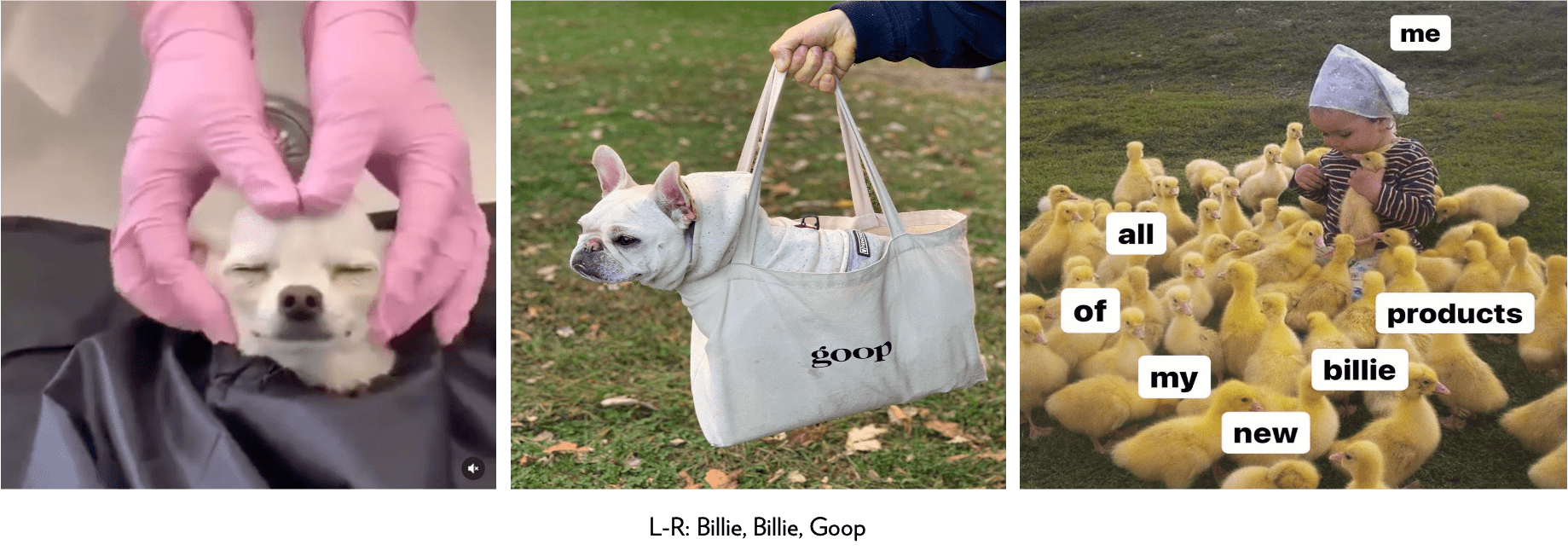 With this focus on cute animals (and often young animals, and often gentle animals) we are also transported back to our child selves; attentive to our pets, obsessed with ponies, reading stories of animal kingdoms. (Such stories often offered a world better and fairer than our own). In this respect animals symbolise a raw and uncorrupted purity, and are an invitation for our often-neglected inner child to step forth. It can feel rejuvenating to be given moments in which to momentarily shake off the shackles of adulthood and remember what it was like to be younger. Doing Goods is excellent at tapping into this atmosphere of childlike wonder with its animal-themed trinkets and faux-naïve aesthetic.
With this focus on cute animals (and often young animals, and often gentle animals) we are also transported back to our child selves; attentive to our pets, obsessed with ponies, reading stories of animal kingdoms. (Such stories often offered a world better and fairer than our own). In this respect animals symbolise a raw and uncorrupted purity, and are an invitation for our often-neglected inner child to step forth. It can feel rejuvenating to be given moments in which to momentarily shake off the shackles of adulthood and remember what it was like to be younger. Doing Goods is excellent at tapping into this atmosphere of childlike wonder with its animal-themed trinkets and faux-naïve aesthetic.
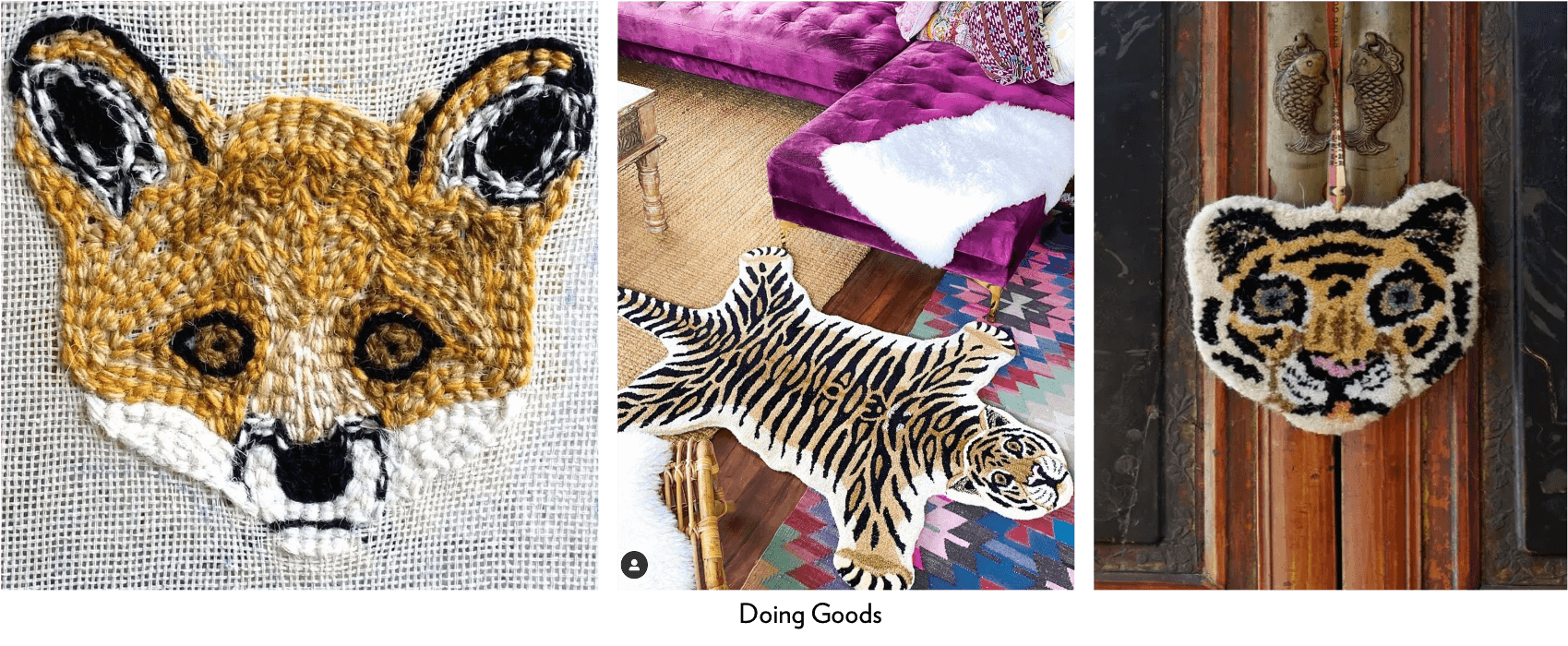 But it’s not all cute puppies and kittens, and rugs in the shape of a cartoon tiger. Animals don’t just symbolise a return to purity, they can also signify a sophisticated and surreal form of luxurious escapism. Gucci’s ‘A Horse of Course’ summer campaign featured elegant-looking thoroughbreds shown sitting at a tea table, shopping in the supermarket, and chillin’ poolside.
But it’s not all cute puppies and kittens, and rugs in the shape of a cartoon tiger. Animals don’t just symbolise a return to purity, they can also signify a sophisticated and surreal form of luxurious escapism. Gucci’s ‘A Horse of Course’ summer campaign featured elegant-looking thoroughbreds shown sitting at a tea table, shopping in the supermarket, and chillin’ poolside.
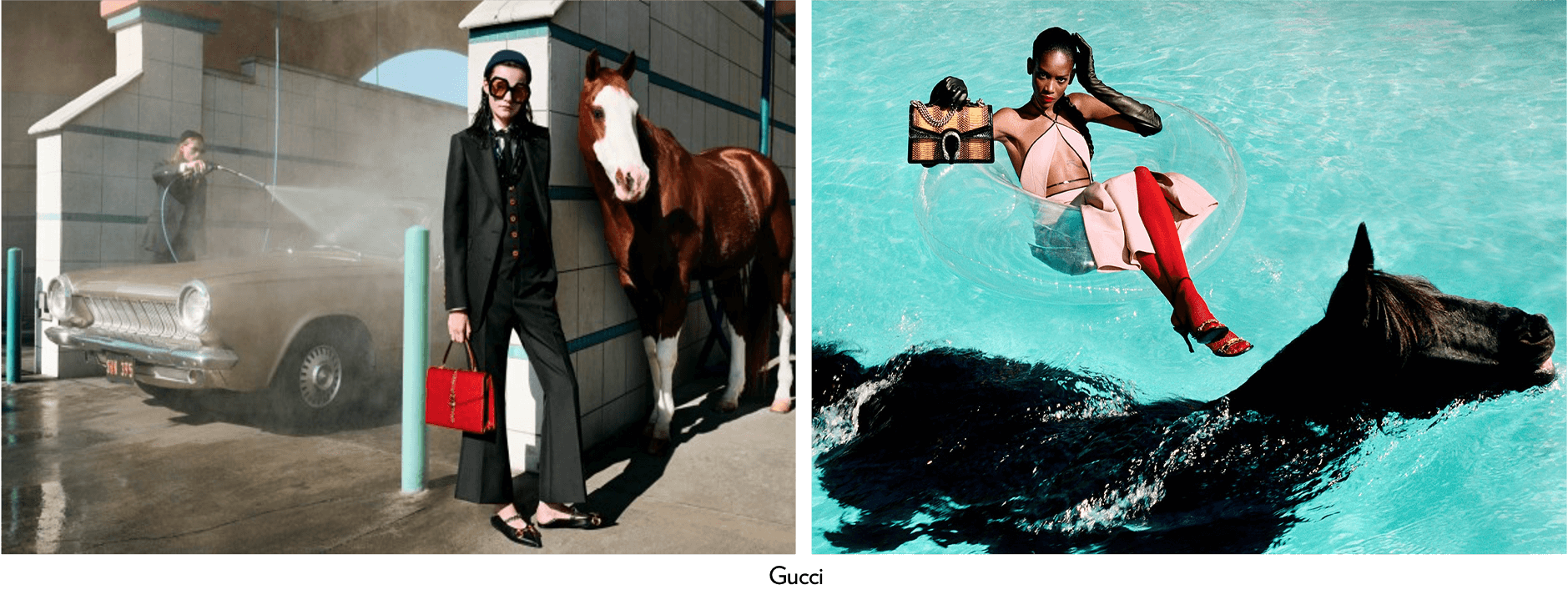
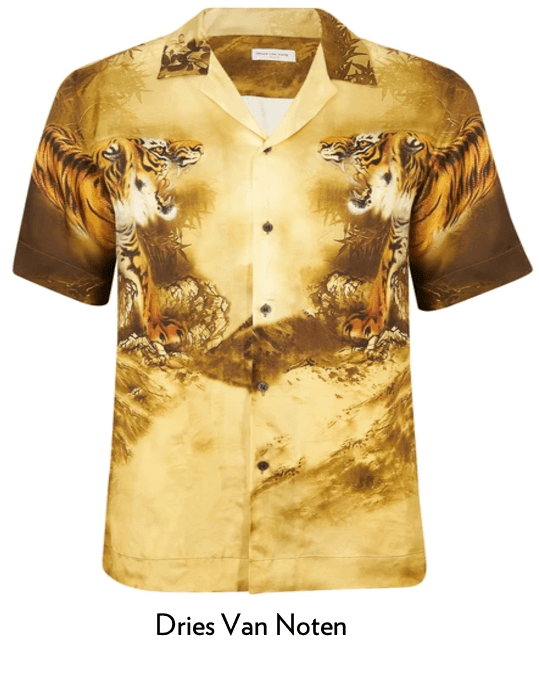 Dries Van Noten features Athena-esque big cats in its latest collection of printed shirts (enormous airbrushed tigers leaping out of the shirt from each shoulder). Shown in this way – unusual, altered, yet integrated into normality in an unexpected way – animals signify a fracture / a schism from ordinary everyday life, and allow us to journey to a world where anything is possible. This is a kind of thrilling escapism, inviting our imaginations to fire up and wander – even when we are (depressingly literally) trapped at home for weeks on end.
Dries Van Noten features Athena-esque big cats in its latest collection of printed shirts (enormous airbrushed tigers leaping out of the shirt from each shoulder). Shown in this way – unusual, altered, yet integrated into normality in an unexpected way – animals signify a fracture / a schism from ordinary everyday life, and allow us to journey to a world where anything is possible. This is a kind of thrilling escapism, inviting our imaginations to fire up and wander – even when we are (depressingly literally) trapped at home for weeks on end.
Finally, we notice a curious focus on bees cropping up across jewellery (Pandora), cosmetics (Chantecaille), stationery (Smythson) and even homeware (Timorous Beasties).
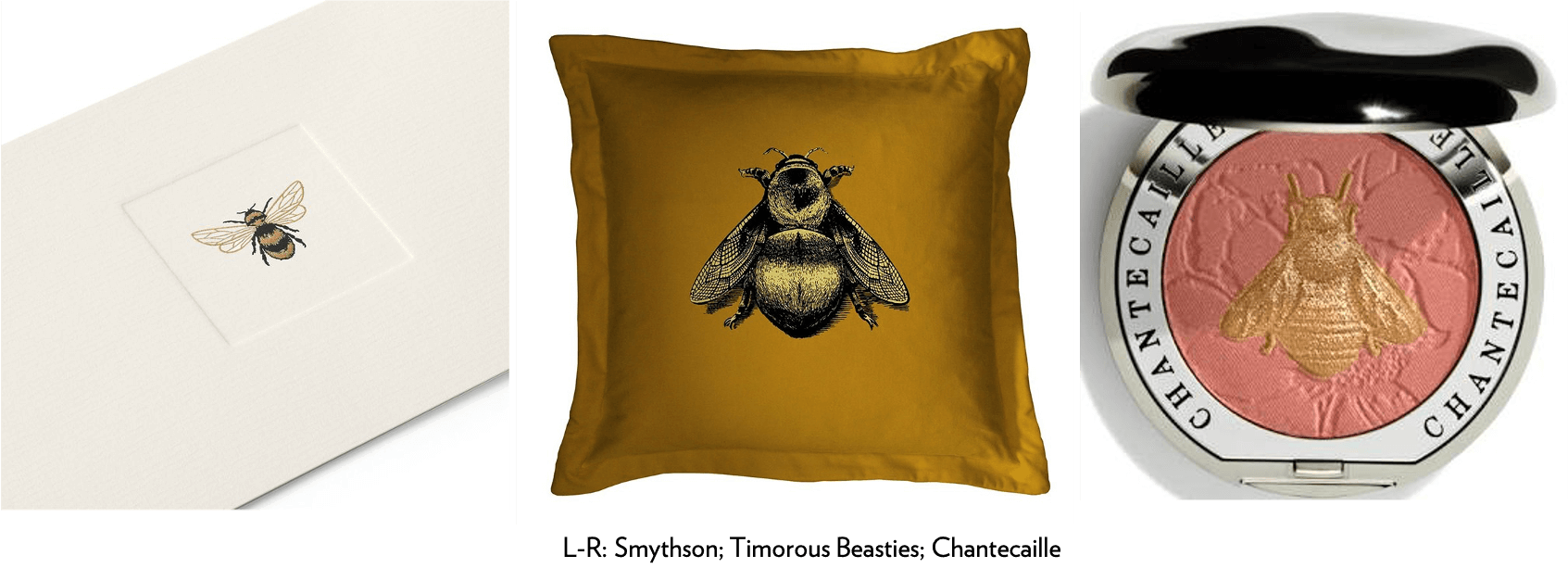
Delicate and beautiful renderings of bees – often shown in the form of a gilded crest or insignia – reflects a patient attention to detail, whilst also celebrating the small and overlooked. Could the bee motif be reflective of a new emphasis on collectivism, solidarity, and group responsibility? Is the bee hive a hopeful symbol of the ethics to emerge from a Post-Covid society?
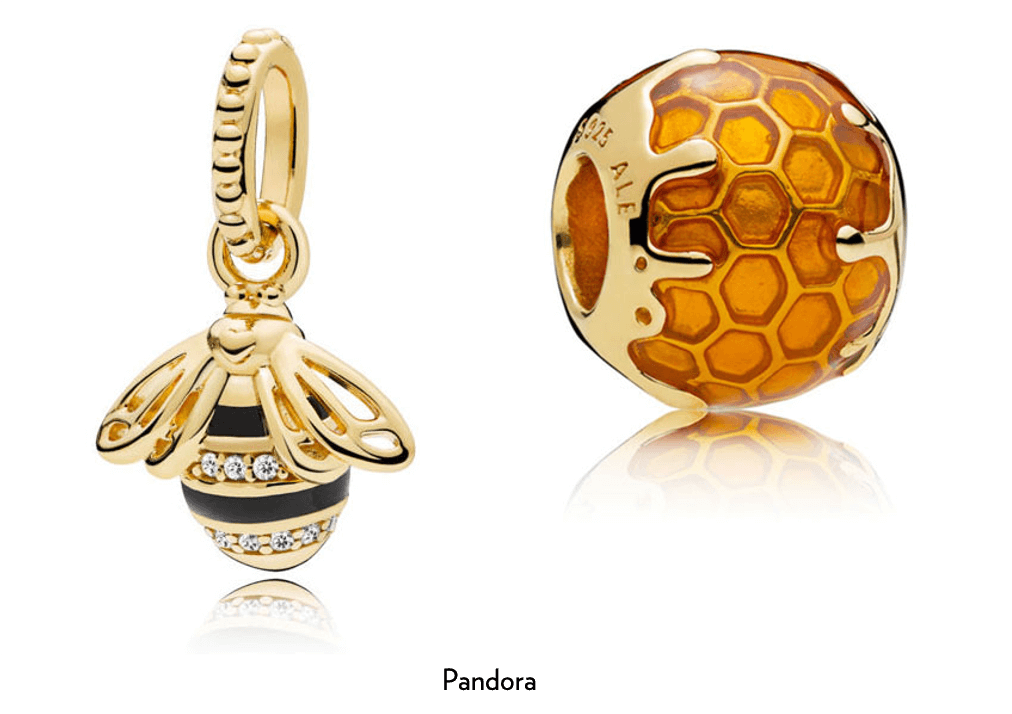 Whether fantastical and humorous, comforting and soothing, or just…bees; animals have been used in various ways by brands as a means of creating much-needed immediate emotional gratification in their audiences. Paradoxically, we find that animals can be used to say the things that humans sometimes cannot.
Whether fantastical and humorous, comforting and soothing, or just…bees; animals have been used in various ways by brands as a means of creating much-needed immediate emotional gratification in their audiences. Paradoxically, we find that animals can be used to say the things that humans sometimes cannot.
Key takeouts for brands:
- Think about ways of getting animals into your social media feed to introduce levity and feel-good humour.
- Show us your pets. Showing consumers ‘behind the scenes’ snapshots of your organisation builds trust and empathy, so be like the New Yorker and show us your company mascots.
- Show animals some love by partnering with or supporting an animal charity. Did you know one of the biggest threats to orangutans’ habitats is the production of palm oil?
Katharine Hill, Project Director
